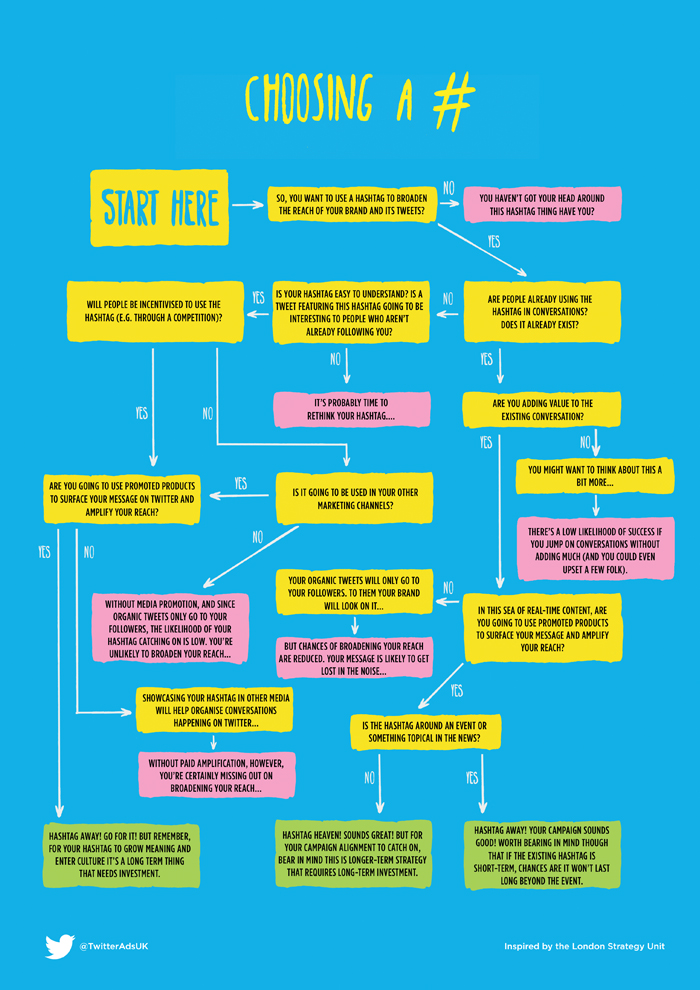Today's infographic is on using hashtags, which comes from a blog post directly by Twitter. Hashtags, almost synonymous with Twitter, can work to enhance a marketing strategy or a campaign. "The brands that create the most effective ones and employ them well reap the benefits on Twitter. Those who haven’t invested the time and thought carefully about their hashtag(s) and how they are going to be used get predictable results."
This step-by-step graphic follows the process of using a hashtag in your tweets. It leads you through various paths that can help evaluate whether the hashtag will be important to your audience or not. Choosing one hashtag over another can increase a tweet's influence and bring new followers who will continue the conversation on your chosen topic. An important thing to remember is that hashtags have to be memorable, so your participants will be inclined to use it. Promoting your hashtag can increase its memorability or you might want to use one that is already in use, as long as you're adding valuable content to the conversation.
The infographic below can help you decide whether your hashtag is worth pursuing or what further steps to take once you have decided. Click the image to enlarge.

The Homeless Hub is quite active on twitter and we have seen great success in using it to get our content out to a wider audience. We also use a variety of hashtags in our daily tweets and have even created our own for events and special report releases.
Our most successful one was #sohc2013 which was used extensively by our account and others for the launch of our State of Homelessness in Canada 2013 report. We attribute its success to our early promotion leading up to the release and making sure to encourage others to use that hashtag when mentioning the report. With Facebook now also using hashtags we were able to promote its use there as well. It's hard to calculate whether using the hashtag itself made a difference, but it did create a connector word for the coversation about the report.
We are always learning new techniques and ways to use social media and we have seen our campaigns not turn out the way we predicted. We used the hashtag #PROOF to promote the release of Household Food Insecurity in Canada 2011 which didn't really circulate through Twitter. We used that hashtag because it represented the name of the organization (PROOF) that authored and released the report. The trouble was, it didn't seem to work with the current conversation that was happening with that hashtag, it seemed that #foodinsecurity was actually favoured by the audience. It was a lesson learned and showed us that choosing the right hashtag takes thought and consideration.
Using a hashtag can help you get the message out about your research to a wider audience and even connect you to researchers working on the same topic. With these benefits in sight it's surely worth a try. Next time you are looking to use a hashtag in your tweets consider using the above infographic for tips.

